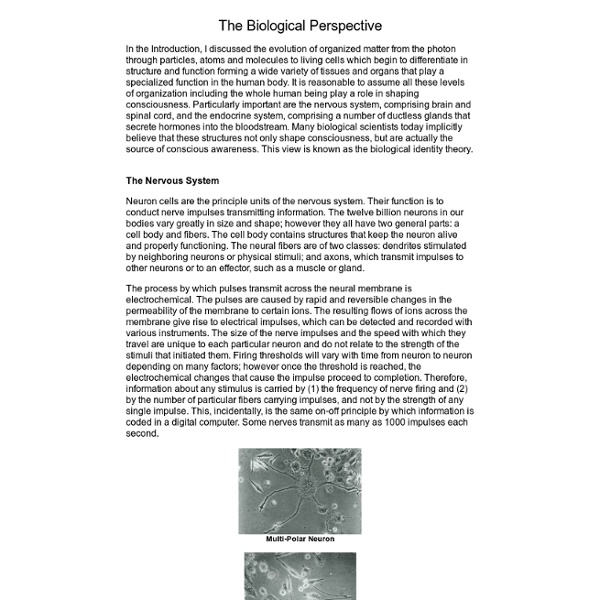200+ Consciousness Raising Documentaries
Do you feel like having a ‘Movie Night’ without having to go anywhere? Here is a list of over 200 consciousness expanding movies and documentaries that will assist you in your evolution – All of which can watched for free online in the links below. How many of them have you seen? Enjoy!
Review of Galantamine: the Lucid Dreaming Pill
So you’re considering the red pill… Galantamine has emerged as THE lucid dreaming pill. This natural supplement has been used for centuries in China as a memory enhancer, and was even noted by the ancient Greeks for its powerful mind-inducing effects. Now we know that galantamine indirectly promotes dreaming sleep as well as lucid dreaming, which is the art of becoming self-aware in your dreams.
3-D images reveal how brain loses consciousness - Technology & science - Science - LiveScience
New 3-D images reveal for the first time what happens inside the brain when a person loses consciousness, suggesting the mysterious sleeplike state occurs as electrical activity deep in the brain dims and connections between certain neurons suddenly break down. "We have produced what I think is the first video in existence in the entire world of [the brain of] a patient being anesthetized," said study researcher Brian Pollard, of the University of Manchester. "We are seeing different parts of the brain, different areas, being activated and deactivated."
Ancient Psychoactive Incense and Preparations
For millennia, humankind has lived with nature, utilizing the flora and fauna to survive. Over the centuries, through trial and error, they learned which plants were the most nutritious, healthy and beneficial, and consequently which plants possessed unique healing, spiritual and magical properties. Early in antiquity, humankind discovered the healing properties and magical qualities of plants like Papaver somniferum, Cannabis sativa and fungi like Amanita muscaria.
The Death Delusion « Kensho
By Bard Canning “Afraid of dying? Don’t be. It’s never going to happen to you, and I can prove it.” It’s said that Albert Einstein once commented that the most fundamental question we can ever ask ourselves is whether or not the universe we live in is friendly or hostile. He hypothesized that your answer to that question would determine your destiny.
Subliminal Motivation
People often do things and can’t say exactly why they did them. While it might seem that “acting without explanation” is the result of poor attention or irrational impulse, it turns out that our brains are wired to do this. It is possible, researchers at INSERM in Paris found, to motivate half the brain without the other half being aware of what’s going on. The INSERM researchers discovered this by measuring how hard subjects could squeeze a grip with each hand. Then, they showed the subjects a picture of a high value (one-euro) or low value (one-cent) coin.
List of Acacia species known to contain psychoactive alkaloids
This is a list of Acacia species (sensu lato) that are known to contain psychoactive alkaloids, or are suspected of containing such alkaloids due to being psychoactive. The presence and constitution of alkaloids in nature can be highly variable, due to environmental and genetic factors. Acacia species having little or no alkaloids in the material sampled[41][edit] Species containing a concentration of alkaloids of 0-0.02% include: References[edit]
Weird Wired Science
Austrian physician Franz Joseph Gall sought to understand the mind of murderers and other criminals by feeling the outside of their skulls. This practice, which he first used in 1796, later came to be called Now largely discredited, it turned out that neither Gall nor anyone could systematically link the bumps and lumps on the head to any regular patterns of behavior, criminal or otherwise. Psychologists no longer need to use scalp massages as diagnostic tools.



